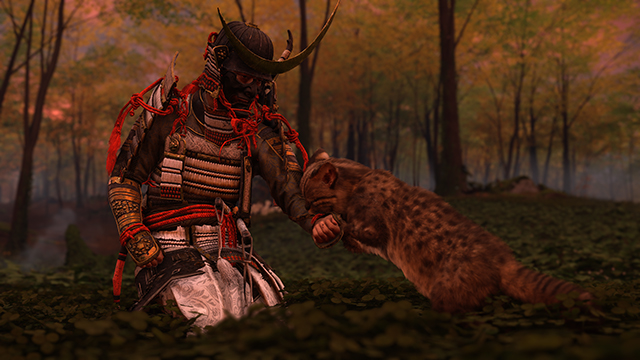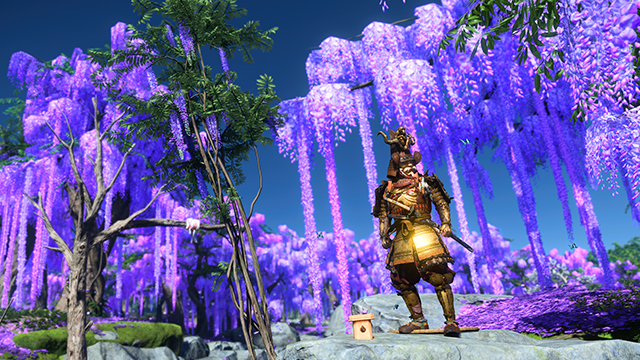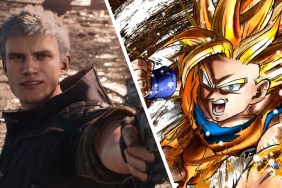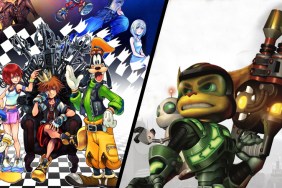Ghost of Tsushima: Director’s Cut is in an unusual spot because it’s simultaneously a current-gen upgrade as well as a vessel for a whole new expansion. It’s playing two different roles but ones that are intertwined due to Sony’s insistence on bundling both together. And even though it’s not a giant step up for those playing the original on PlayStation 5, the Iki Island expansion is the main highlight here as it is a phenomenal companion piece to the main game.
The Iki Island DLC hooks right into the core experience and is accessible shortly after the second act kicks off. Since it can be played at a number of different points in the campaign, it can initially sound like an unimportant tale. If a story thread is such a big deal, then how it can be nonchalantly slotted around?
The Iki Island narrative elegantly parries and subsequently slices that concern into ribbons by thoughtfully focusing more on Jin Sakai’s backstory instead of trying to gin up a new thread that unnaturally tacks itself onto the original’s tale. This approach gives Sucker Punch free rein to flesh out its protagonist while not sacrificing the sanctity and pacing of the base game’s narrative.
Jin’s character is put through the wringer through Iki’s big bad, the Eagle. She’s a twisted shaman threatening to take over Iki Island with her droves of loyal guards and hallucinogenic poison. After forcing this hellish concoction upon Jin, his internal demons are given an external form that makes this more than just another Mongolian invasion.

While she does command those Mongolian forces to physically attack Jin, she also uses her brew as a means to attack Jin on a spiritual level, something that is made all the more intense by the setting itself. Jin has a personal connection with Iki Island as it marks a place of great shame and failure for the Ghost of Tsushima well before he earned that moniker. Revisiting that island is already traumatic for Jin and that trauma is exponentially heightened through the Eagle’s calculated mental guerrilla warfare.
Great antagonists test the protagonist and force them to change and that’s exactly what the Eagle does. Her multi-pronged attack on Jin puts him in a situation where he needs to adapt in order to overcome. Growth is inevitable as it is the key to victory and Jin’s personal journey throughout the expansion is captivating because of how it is put to the forefront of the experience and so thoroughly examined. Walking through ghostly apparitions of a character’s most painful moments might not be the newest idea in the gaming space, but it’s contextualized well enough through the Eagle’s hallucinogenic drink to overcome the lack of originality.

But there are other factors that force Jin to change as Iki Island is not a welcoming place for samurai. Natives are hostile toward samurai as past invasions have driven quite a wedge between the two factions. Jin’s family also has a dark past that’s directly linked to those invasions and it’s something the locals aren’t keen on sweeping under the rug despite the current Mongol invasion. That dark past brings up themes of guilt, forgiveness, neglectful parents, familial sins, breaking harmful cycles, and more and all of it ties directly into the aforementioned personal journey that Jin gets forced into.
And since it is more personal, this DLC gives players a more introspective look into Jin’s character as it digs deeper into how he came to be. It expands upon flashbacks or previously mentioned bits from the main game so it doesn’t feel like Sucker Punch was randomly inventing backstory after the fact; the seeds were already sown. Given how this expansion puts those past events in a different light, Iki Island has some striking similarities to The Last of Us‘ Left Behind as both naturally fit into the core game while also further humanizing their protagonists and faithfully injecting them with a bit more nuance.
Iki Island’s narrative strongest feature is the way in which it beautifully weaves together all of these different aspects into one cohesive whole. Jin’s internal struggles are tied to the island that’s under siege which is tied to his family which is also links back to his internal struggles. It’s all connected and while there are shocking twists and palpable tension along the way that make for an engaging basic plot, the narrative’s ability to meaningfully tie together its multitude of ideas —and do it so gracefully — is remarkable.

This doesn’t just apply to the main missions, either. Jin is often faced with the horrors of his legacy throughout the many side objectives and activities strewn across the island. Playing a flute for some cats will bring up relevant stories about his parents. An orphan gathering supplies to build a home makes Jin reflect on his history with the island. The locals and the many missions tied to them are there to organically fit with the DLC’s overall themes and that level of detail, quality, and consistency is almost entirely absent from the most other open-world games that are bloated with unrelated filler to hit some arbitrary content quota.
Iki Island does give Jin potential to grow physically, too. While the excellent gameplay systems carry right over, there are a few new armor sets, cosmetics, and abilities that expand Jin’s repertoire. Many of the existing enemy types and missions make the jump as well with some slight tweaks here and there. For example, cat sanctuaries are similar to the fox dens in the main game but are slightly cuter and the new shaman enemy that buffs his allies adds another layer of enemy prioritization to combat. The few additional boss fights are as tense as the ones in the main game and remain satisfying tests in skill. It’s still recognizably Ghost of Tsushima and is unchanged in a lot of aspects, but that still works exceptionally well.
It’s also still recognizably Ghost of Tsushima when played on PlayStation 5. It was one of the lucky PS4 games that were blessed with expanded backward compatibility functionality on the PS5 as it saw a frame rate and resolution boost when played on new hardware. This established functionality makes the Director’s Cut a little more difficult to justify since the leap to new hardware isn’t as immediately noticeable as it was in Spider-Man or Metro Exodus.
However, Ghost of Tsushima: Director’s Cut still looks absolutely amazing either way thanks to an art style that was crafted to be the best showpiece for HDR. Saturated environments are bathed in remarkable colors that only look better at this higher resolution and when running around 60 frames per second. It’s absolutely remarkable fusion of a vibrant art style and technical prowess that makes Ghost of Tsushima one of the most visually appealing games.

Director’s Cut also comes with a few free upgrades for all Ghost of Tsushima owners. While being able to hide the quiver in Photo Mode and use more alternate control schemes are both worth having, the lock-on during combat is a game-changer. It’s now much easier to hit targets and harder to whiff or attack the wrong person; a seemingly small addition with strong positive implications.
Ghost of Tsushima‘s native PS5 version also has a handful of exclusive features. The adaptive trigger support is functional if unexciting as they tense up when firing the bow or pulling down structures with the grappling hook. The haptic feedback is more noticeable as it is constantly shaking for either gameplay or cinematic purposes. It’s generally well done whether it’s rumbling accordingly when petting a cat or when it jolts to emphasize a booming title card. And while load times were already pretty fast on the PS4, the game almost never takes more than a few seconds to get going on PS5.
The Japanese lip sync is the one new feature that doesn’t fully live up to its potential. While it does strengthen the argument for playing the game in its native tongue, the lip flaps aren’t usually accurate. They’re often close enough to work, but not good enough to make that argument definitively. Many scenes are wide shots and players might not notice every facial detail since they’ll likely be reading the subtitles, but this added setting is still not as precise as it should be.
Regardless of that small nitpick, Ghost of Tsushima: Director’s Cut is still an unforgettable experience that only improves upon the incredible base game. The suite of free and paid upgrades is nice, but the Iki Island expansion is a standout example of how DLC should be done. It meaningfully expands upon Jin’s character and the world while also being a meaty experience that respects the player’s time. While the ticket price back to Tsushima for they may vary for some, the side trip to Iki Island is well worth the boat fare.
Disclosure: Coverage code provided by the publisher. The game was played on PS5.










